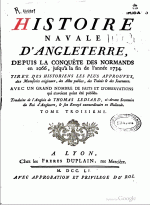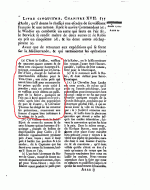Greetings aquanut and thank you for your reply. As a matter of fact I did go through some of the older threads. But I keep on finding conflicting information, not to mention that since the archaic sources are never mentioned, that makes it harder to verify what we know to be true an is just assumptions (an example of some if the conflicting information, as an example, is the number of cannons on the Carmen, which some say that it was 72, some 62, some 52 and some even 50). As of right now, what I do know to be true, for sure, is the information on Echevers three main ships (the Carmen, The Rosario and the Concepcion). I found this information in the Archives of the Indies (AGI:CONTRATACION,1276,N.2). Let me start with this information then:
Fleet of General Don Antonio de Echevers y Subiza (documented as a Registro and not an actual Treasure Fleet):
1 - The Capitana, Nuestra Señora del Carmen, San Antonio y San Miguel (the last part of the name was added shortly before departure from Spain. This was an English built ship owned by Antonio de Echevers y Subiza. The ship was a man of war (not a galleon), with two lower gun decks, composed of 26 iron cannons each (on the upper gun deck it had 8 sixteen pounders of Spanish manufacture and an the remaining 18 of British manufacture - on the lower gun deck it had 26 cannons, all ten pounders of Spanish manufacture), then on the upper deck, between the castle and the alcazar it had a total of 10 iron cannons, all six pounders, for a total of 62 cannons total. The ship was 713 tons.
2 - The Almiranta, Nuestra Señora del Rosario y San Francisco Javier, owned by Antonio de Echevers y Subiza. This was also an English built ship (believed to be a galleon) with one gun deck, composed of 22 iron cannons (all 10 pounders of Spanish manufacture). On the alcazar it had a total of 12 cannons, all six pounders of British manufacture, and then on the castle it had 6 additional cannons, all four pounders, for a total of 40 cannons total. The ship was 312 tons.
3 - Nuestra Señora de la Concepción, San José y San Francisco Javier, owned by Antonio de Echevers y Subiza, of native manufacture (de fabrica criolla). This was a patache with one gun deck, composed of 18 iron cannons (all 10 pounders of Spanish manufacture). On the alcazar it had a total of 10 cannons, all six pounders of Spanish manufacture, and then on the castle it had an additional 4 cannons, all four pounders, for a total of 32 cannons total. The ship was 265 tons.
Okay, so that is all I have for the ships above. Now let me document what is believed about the other ships, to see if I can get confirmation as to if this is correct, and, in some cases, more information (as I do not have the tonnage, type of ship and number of cannons for some of the other vessels)
General Ubilla's New Spain Fleet was composed of:
1 - The Capitana, Nuestra Señora de Regla, San Dimas y San Francisco Javier (Presumably a galleon). Armament: 50 iron cannons total. This ship was 471 tons.
2 - The Almiranta, Santo Cristo de San Roman, Nuestra Señora del Rosario y San Jose (Presumably a galleon). Armament: 54 iron cannons total. This ship was 450 tons.
3 - The Merchant Ship Santisima Trinidad y Nuestra Señora de la Concepcion. This ship was owned by Miguel de Lima y Melo (for which it was nicknamed the Urca de Lima). The ship was a Dutch built Urca type ship of 350 tons with 20 cannons.
4 - The Patache Nuestra Señora de las Nieves y las Animas. 194 Tons (no information on its armament: type or number of cannons).
5 - The sources vary about this last ship. Some say that it was a patache named the Santo Cristo el Valle, others say that it was a balandra called Maria Galante, and yet other sources say that it was a British price (a fragatilla purchased by Ubilla from Echevers in Havana, which Ubilla renamed Nuestra Señora de Regla, as his Capitana). (I need to confirm the name of this ship, what was the tonnage, if known, and its number of cannons).
General Echevers' remining ships:
4 - Señora de la Popa. This ship is said to be the one referred to as La Holandesa. According to what has been published, the ship was a Dutch prize captured off Punta Bernardo (50 miles from Cartagena), which was purchased by Echevers for 2,000 pesos and renamed by Echevers Nuestra Señora del Carmen (just as his Capitana), but was often also referred to as Nuestra Señora de la Popa, as not to confuse names with that of the Capitana.
5 - San Miguel, built in Vizcaya and also owned by General Echevers, 22 cannons (18 four pounders an 4 two pounders).
6 - There is confusing information about this last ship. It is said that this was a French price captured near Portobelo (a galley - una galera, that Echevers purchased for 4,125 pesos. What makes this even more confusing is that it is said that Echevers also renamed this Nuestra Señora del Carmen, for which, to prevent confusion, it was more commonly called El Ciervo. There is some mention to a San Miguel de Excelsis, which is said to have been the English price captured by Echeves outside of Portobelo. If this is correct, then this is the ship sold to Ubilla an unrelated to the other San Miguel mentioned above (this has caused confusion too, as some sources include both of these vessels by the same name as one and the same). Also, I can't say for sure if San Miguel de Excelsis was the original name of the English price or not (do not have any archaic source that would help to sort out any of these information).
The French Vessel traveling with the Fleet:
1 - Le Griffon, Captain Antoine D'ayre. I know this was the only surviving ship. But I still need to know what was the tonnage of this ship and how many cannons did it have. Some sources document this vessel as possibly being a frigate. But can't confirm that.
Okay, so this is all I have. I am hoping to discuss the information here to see if I can separate facts from fiction, and hopefully learn more about the ships themselves.



 ?
?



 Now, learning the number of cannons for some of these other vessels might be a good thing anyways (as it seems that we do not have this information for all the ships of the 1715 fleet). Even if the information is somewhat useless for identifying the site through cannon and caliber comparison. Just look at the example of the Sandy Point wreck, said to be the Rosario. The number of cannons on that site (between the ones currently on the site and the ones salvaged, adds up to 41 cannons). Chances are that there might be a few more cannons that have not been discovered or even salvaged without this being recorded. But even if we assume that the 41 were the total number of cannons on that ship, that would be one cannon too many for what the Rosario was said to be carrying (the Rosario had 40 cannons). Just a thought.
Now, learning the number of cannons for some of these other vessels might be a good thing anyways (as it seems that we do not have this information for all the ships of the 1715 fleet). Even if the information is somewhat useless for identifying the site through cannon and caliber comparison. Just look at the example of the Sandy Point wreck, said to be the Rosario. The number of cannons on that site (between the ones currently on the site and the ones salvaged, adds up to 41 cannons). Chances are that there might be a few more cannons that have not been discovered or even salvaged without this being recorded. But even if we assume that the 41 were the total number of cannons on that ship, that would be one cannon too many for what the Rosario was said to be carrying (the Rosario had 40 cannons). Just a thought.


